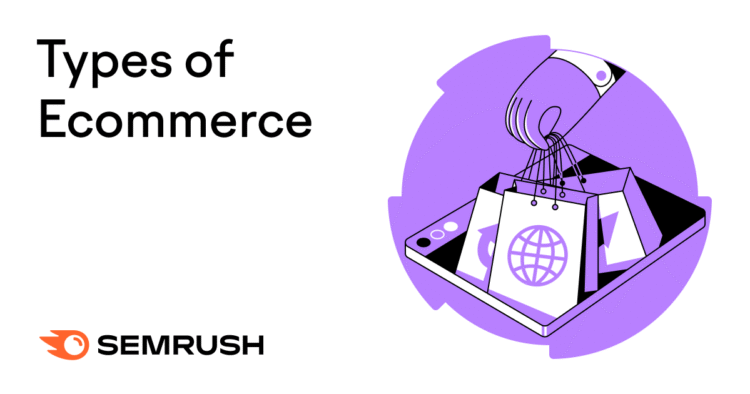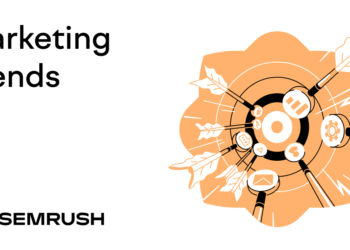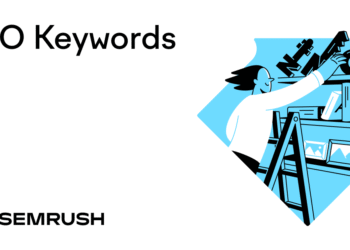There are many types of ecommerce businesses.
By the end of this guide, you’ll know about the six most common ecommerce business models. And have some ideas for how you can be successful with each.
Let’s look at them in detail.
1. Business-to-Consumer
Business-to-consumer (B2C) ecommerce is when you sell products or services online directly to individual consumers.
This can include physical goods, digital products, or subscription services.
And involves selling through your own website. Like Sephora does:

Other Examples of B2C Brands
- Glossier: Sells its own skincare and beauty products directly to consumers
- HelloFresh: Delivers meal kits through a weekly subscription model
- Casper: Sells mattresses and sleep products directly to individual shoppers
Pros and Cons
|
Pros |
Cons |
|
You can start small and build gradually |
You need to figure out how to drive traffic to your website |
|
It’s fairly easy to sell your own product or resell others’ products |
Handling returns and customer service can get overwhelming |
|
You don’t need to manage complex business contracts |
Many niches are highly competitive |
How to Succeed with the B2C Model
To succeed with the B2C model, you need strong brand recognition that people trust and remember.
For example, according to Semrush’s Traffic Analytics tool, Sephora gets nearly 53 million visits each month.
More than 70% of that comes from direct traffic. Which means customers type in the URL into their browser or go to the site via bookmarks because they already know the brand.
Organic search is the brand’s second-largest traffic channel.

Start by studying B2C brands similar to yours.
Look at how they present their products, handle returns, and manage the checkout process. Because these can all lead to greater trust and brand recognition over time.
For instance, Casper offers a 100-night trial, which reduces hesitation for buyers.

2. Business-to-Business
Business-to-business (B2B) ecommerce is when you sell products or services online to other businesses.
Your customers might be retailers, manufacturers, offices, service providers, etc.
Customers may place large orders, order on a recurring schedule, and/or require custom pricing.
Depending on your product or service, businesses might place orders directly or work with a sales rep. In both cases, they may request a custom quote before buying.
For example, Adobe’s enterprise products require businesses to contact sales before buying:

Other Examples of B2B Brands
- Uline: Sells bulk packaging, boxes, and warehouse supplies to offices, factories, and fulfillment teams
- Quill: Supplies office products, furniture, and cleaning essentials to workplaces
- Grainger: Sells safety gear and industrial supplies to businesses in construction, manufacturing, etc.
Pros and Cons
|
Pros |
Cons |
|
You stand to earn more per order |
Sales cycles are longer and less predictable |
|
Customers are likely to make repeat purchases |
You may need to figure out how to offer quotes, custom pricing, or flexible payment terms |
|
You can often forecast inventory with relative accuracy |
It can be harder to build trust if you’re just starting out |
How to Succeed with the B2B Model
To succeed in B2B ecommerce, you need to earn trust—because buyers are often placing large, high-stakes orders and need reassurance.
That’s why reviews matter.
Buyers often check sites like Trustpilot to see what others say and how you respond.
For example, Quill has received over 700 reviews on Trustpilot and has a 4.4-star rating.

They reply to many reviews, which helps build trust and shows they’re responsive when issues come up.

Strong B2B ecommerce brands also make key details easy to find.
Uline is a good example here.
The company provides detailed specifications of its products, so buyers know exactly what they’re getting.
The site even shows delivery timelines, a contact number, and stock availability right on the homepage.

All these signals help reduce friction, boost trust, and give buyers the confidence to make bulk purchases.
3. Consumer-to-Consumer
Consumer-to-consumer (C2C) ecommerce is when you (as an individual) sell products or services directly to other individuals.
You don’t need your own website to do this. Many use a third-party platform that:
- Connects sellers and buyers
- Handles payments
- Often provides basic tools for shipping and communication.
People frequently use a C2C model to sell handmade goods, collectibles, and used items.
Like this used guitar sold on Reverb, a C2C marketplace for musical instruments and related equipment:

Other Examples of C2C Platforms
- eBay: Lets you resell secondhand goods, collectibles, and more to individual buyers
- Facebook Marketplace: Helps you sell items like furniture or electronics locally
- Nextdoor Finds: Helps you list home items and clothes for sale within your neighborhood
Pros and Cons
|
Pros |
Cons |
|
You don’t need a website or technical skills to start |
Most platforms take a cut of your sales |
|
You can begin with things you already own |
You don’t control the branding or buyer experience |
|
You don’t need to hold inventory |
Income can be inconsistent or unpredictable |
How to Succeed with the C2C Model
To succeed in C2C ecommerce, keep your listings clear and your responses fast. And offer returns if you can.
Start by learning how the platform works and checking out top sellers for ideas.
Let’s say you’re selling on eBay. Here’s an example of a seller who’s sold over 280 items and has 100% positive feedback.

Their listings include multiple clear photos taken from different angles.
They also list every product detail and keep the descriptions simple.

They even offer returns, which can be a big plus when selling used items.
Some platforms, like Reverb, also show if sellers respond quickly.

These details help listings stand out and may help them get chosen more often.
Take notes from sellers who are doing it well. And apply what works to your own listings.
4. Consumer-to-Business
Consumer-to-business (C2B) ecommerce is when you sell your services or products to a business through an online platform.
You might offer freelance writing services, license creative work, sell goods, or get paid to test products.
Unlike in a B2B model, you’re not acting as a business. You’re working as an individual offering value to a company.
One example is 99designs, where designers and other creatives can offer services to businesses looking for logos, branding, and more.

Other Examples of C2B Platforms
- Upwork: Lets you offer freelance services, including writing, design, tech support, admin work, marketing, and more
- Fiverr: Lets you sell a range of digital services like design, writing, marketing, video editing, voiceover, and tech support
- Shutterstock Contributor: Lets you upload and license your photos or videos for companies to use
Pros and Cons
|
Pros |
Cons |
|
You can start with items you already have or services you already provide |
Work isn’t guaranteed—you may not get consistent income |
|
You don’t need a store or website |
Most platforms take a cut of what you earn |
|
You choose what to offer, when to work, and who to work with |
There’s high competition in many niches |
How to Succeed with the C2B Model
To succeed in C2B ecommerce, you need to offer something useful to businesses and make it easy for them to work with you.
Choose a platform that fits what you’re offering. Then review its requirements.
And look at top-rated sellers to see how they present their offerings.
On Fiverr, sellers with strong reviews and on-time delivery earn a “Top Rated” label that helps them stand out.

Their gig titles clearly state what they do:

They also use clear descriptions and structured packages with pricing and delivery times.

Take the lead from these high-performance to make sure your listing explains what you offer, how much it costs, and how long it takes.
5. Business-to-Business-to-Consumer
Business-to-business-to-consumer (B2B2C) ecommerce is when you sell to consumers by partnering with another business, which is usually an online platform or retailer.
You provide the product or service. The other business helps you reach buyers and handles transactions and delivery (if needed).
Like Native selling on Amazon:

Examples
- Native: Lists its personal care products on Amazon and other platforms. They also sell directly through their own website. So their model includes both B2B2C and B2C.
- Bold Commerce: Offers ecommerce tools to Shopify merchants through the Shopify App Store
- Feastables: Sells its own snacks on GoPuff and other retailers, while also selling directly through its website
Pros and Cons
|
Pros |
Cons |
|
You can reach a bigger audience without building your own store |
You don’t control the full customer experience |
|
The platform handles things like reaching customers, managing payments, etc. |
You’ll share revenue or pay platform fees |
|
You can sell where buyers already shop |
You compete with other brands on the same platform |
How to Succeed with the B2B2C Model
To get the most from a B2B2C model, sell through partner platforms—but also keep selling on your own site (if possible) to stay in control.
Let’s say you sell eco-friendly cleaning tablets.
Top platforms like Amazon and Walmart are obvious places to sell.
But you should also consider more niche platforms like Grove Collaborative, EarthHero, and Package Free. Especially ones that stand to give you a good amount of visibility.
For instance, Grove Collaborative gets more monthly visits than Package Free and EarthHero. So, starting there could bring faster results.

If your resources are limited, prioritize platforms with the right mix of traffic and audience fit. A smaller site can still deliver results if it aligns closely with your product.
Whichever platform you choose, make sure your listings are clear and easy to understand.
Use strong product titles, clear photos, and detailed descriptions to help your listings stand out.
6. Business-to-Government
Business-to-government (B2G) is when you sell products or services online to government agencies or public institutions—like schools, federal agencies, or local departments.
This could include things like IT services, software, office supplies, or consulting.
You usually sell through government procurement portals, like Sam.gov. Not through a regular ecommerce site.

Examples of B2G Companies
- UNICOM Government: Sells IT products and services to federal, state, and local agencies
- ODP Business Solutions: Supplies office products and services to businesses, including government agencies
- Tyler Technologies: Provides software and services to local governments, courts, and public safety agencies.
Pros and Cons
|
Pros |
Cons |
|
You can earn more per sale from large government contracts |
You may face a slow bidding process |
|
You often get long-term and repeat orders from reliable buyers |
You’ll need to meet strict compliance requirements |
|
You can qualify for set-aside contracts, which are reserved for small businesses |
It’s harder to get started compared to other models |
How to Succeed with the B2G Model
To succeed in B2G, you need to complete any special requirements, meet eligibility rules, and follow strict contract terms.
Always monitor active government contract boards like Sam.gov. New listings appear regularly across categories.
For example, here are listings for office furniture with delivery locations, deadlines, and agency contacts:

Before bidding, read every requirement carefully.
Some listings are open only to specific business types. Like this one, which is reserved for SBA-certified, women-owned businesses.

Many B2G sellers also sell to the private sector.
For example, ODP Business Solutions supplies office products to both public agencies and regular businesses.

Selling to both markets gives you more stability. So you can grow your government contracts without relying on them alone.
This means you need a functional website where other businesses can find your products or services and request a quote. And it’s best to follow SEO best practices to rank higher on search result pages for relevant queries.
Start Your Ecommerce Business with Confidence
No matter which model you use, it’s a good idea to do market research first.
Use Market Overview in Semrush’s Traffic & Market Toolkit.
Enter the main competitors for your category.
Then, check the “Market Summary” and “Growth Quadrant” data to compare traffic, growth trends, and overall market positions.

Use these insights to spot growth opportunities and decide where to focus.
For example, if there’s low consolidation, a fair amount of market traffic, and multiple small sites are gaining traffic, it could mean the market is still open and worth entering.
Sign up for Market Overview and all the other tools in the Traffic & Market Toolkit today.




![6 Tools to Find New Keywords [Free + Paid Options]](https://mgrowtech.com/wp-content/uploads/2025/08/find-new-keywords-sm-350x250.png)













